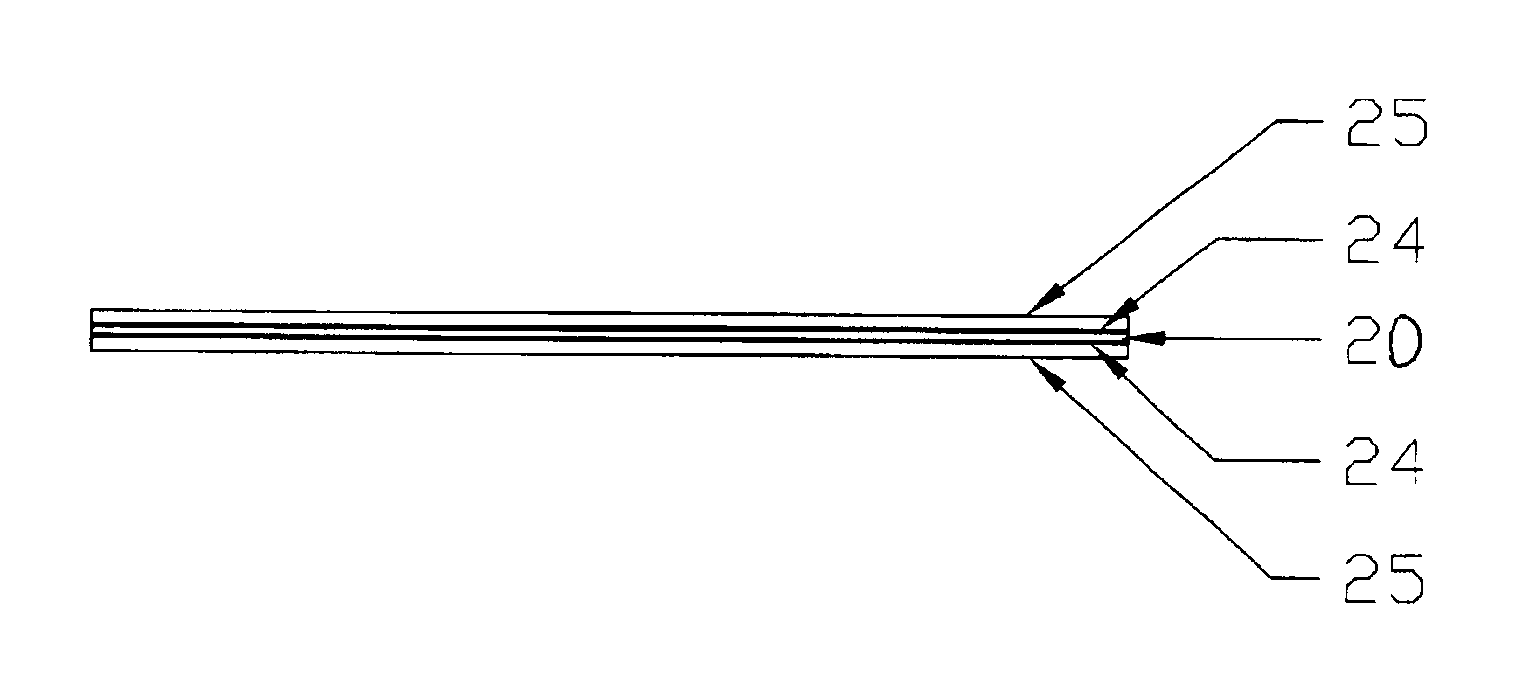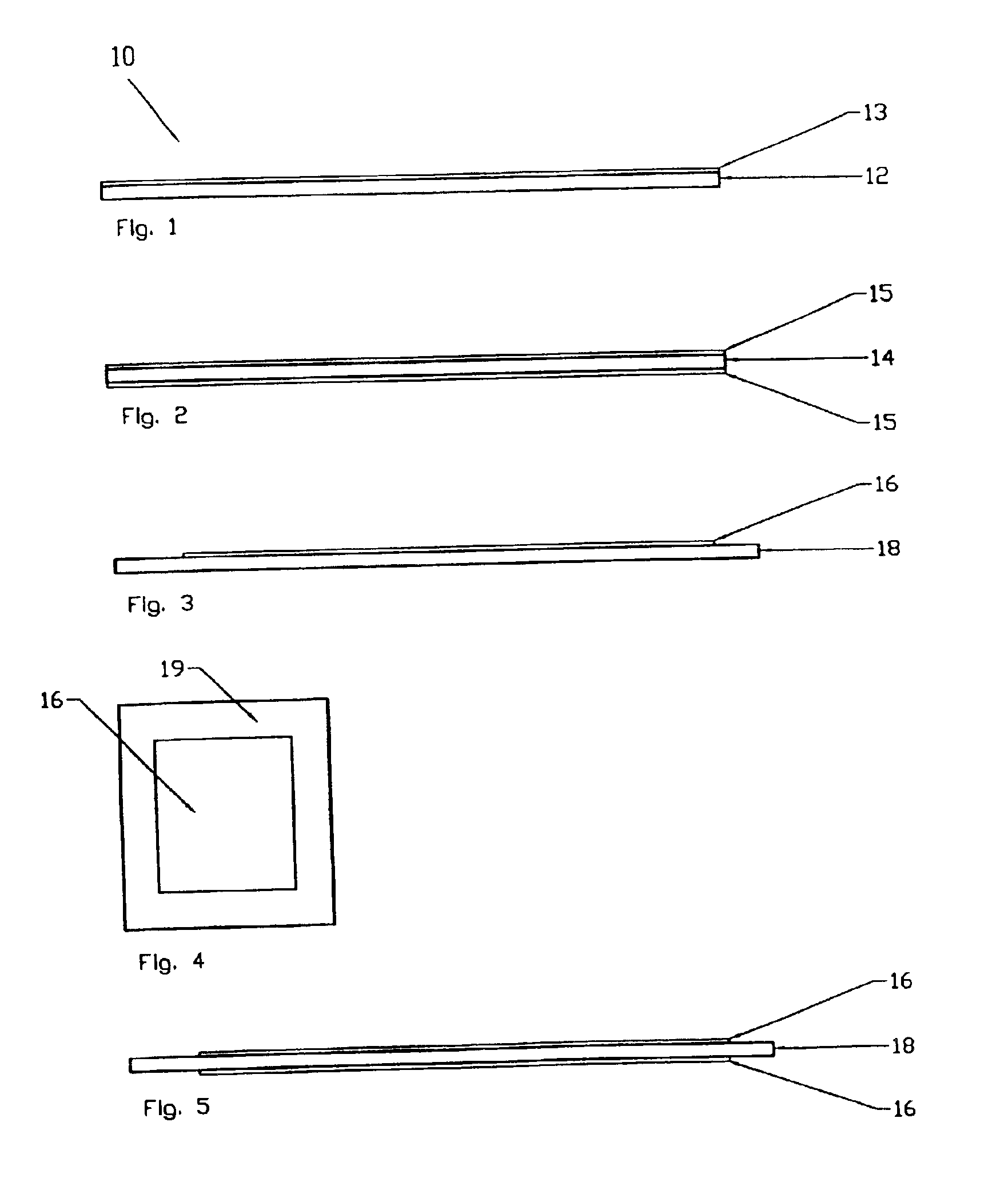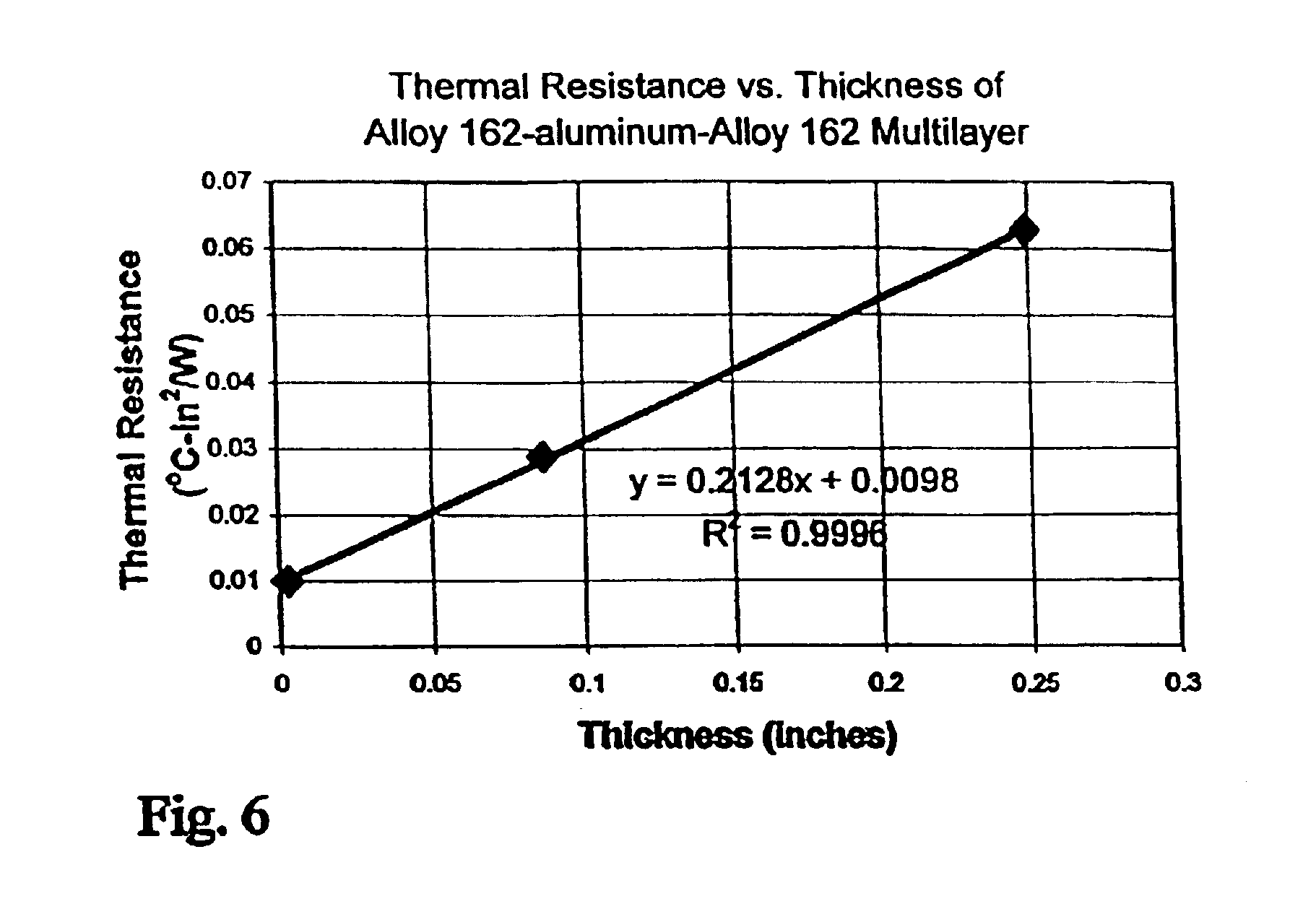Thermal interface structure for placement between a microelectronic component package and heat sink
a microelectronic component and heat sink technology, applied in electrical apparatus construction details, transportation and packaging, chemistry apparatus and processes, etc., can solve the problems of changing the performance characteristics of the component and/or destroying the component, excessive pressure can create detrimental and undesirable stresses, and the gap between the surface of the microelectronic component and the heat sink may be relatively wide and irregular, and achieve high thermal conductivity and low thermal resistance. , the effect of high thermal conductivity
- Summary
- Abstract
- Description
- Claims
- Application Information
AI Technical Summary
Benefits of technology
Problems solved by technology
Method used
Image
Examples
example 11
A multi-layer composite with a carrier layer material of copper and a layer of a low melting indium alloy on opposite sides thereof was tested with the thickness of the carrier layer varied as shown below in Table D:
[0035]
TABLE DCore / Core / ThicknesspressureThermal Resistancematerialalloy foil(mils)(psi)(° C. in2 / W)1 oz CopperNone1.4200.2831 oz Copper1621.4200.0102 oz Copper1622.8200.0113 oz Copper1624.2200.0114 oz Copper1625.6200.0126 oz Copper1628.4200.019
[0036]The tests in the above table D were conducted to show that differences in thickness of the core material do not materially change the thermal resistance of the sandwich multi-layer structure. The thermal resistance is due more to the interface resistance between component and composite than to the inherent thermal resistance due to thickness changes in the core material. This is because copper has a thermal conductivity of about 300 W / mK, and therefore does not contribute significantly to the thermal resistance.
example 111
A similar test was conducted using aluminum as the core material with the results shown below in Table E:
[0037]
TABLE ECarrier / Carrier / ThicknessPressureThermal ResistancematerialAlloy(mils)(psi)(° C. in2 / W)Aluminum1622.00200.01Aluminum16286.5200.029Aluminum162250200.063
[0038]The tests in the above table E clearly show that differences in thickness of the aluminum do not materially change the thermal resistance of the sandwich multi-layer structure even for drastic changes in aluminum thickness.
[0039]If the thermal resistance of the three composite samples are plotted against thickness (x axis) as shown in FIG. 6 the thermal conductivity can be calculated. The thermal conductivity is the inverse of the slope of the graph and may be calculated by the following equation:
Thermal conductivity=1 / slope
Thermal conductivity=1 / 0.2128° C. in / W·39.4 in / m=185 W / mK
[0040]The measured thermal conductivity is reasonable for aluminum.
example 1v
[0041]Experiments were also run on a multi-layer structure as shown below in Table F to show that the surface finish of the platens would have little effect on the thermal performance of the sandwich structure. The exact surface finish of the roughened platens is not known but the gap with no interface material, referred to as “dry gap” was measured for the roughened surfaces to compare with the normal platens polished to a surface finish of 0.4 micrometers.
[0042]
TABLE FThermalCarrier ThicknessPressureResistanceSamplePlatens(mils)(psi)(° C. in2 / W)Dry gappolished0200.051Dry gaproughened0200.231162 / 2 oz Cu / 162roughened2.8200.021162 / 2 oz Cu / 162polished2.8200.012
[0043]The above table F shows that the sandwich thermal resistance is not affected greatly by differences in surface finish and tolerance issues.
PUM
| Property | Measurement | Unit |
|---|---|---|
| Temperature | aaaaa | aaaaa |
| Length | aaaaa | aaaaa |
| Thickness | aaaaa | aaaaa |
Abstract
Description
Claims
Application Information
 Login to View More
Login to View More - R&D
- Intellectual Property
- Life Sciences
- Materials
- Tech Scout
- Unparalleled Data Quality
- Higher Quality Content
- 60% Fewer Hallucinations
Browse by: Latest US Patents, China's latest patents, Technical Efficacy Thesaurus, Application Domain, Technology Topic, Popular Technical Reports.
© 2025 PatSnap. All rights reserved.Legal|Privacy policy|Modern Slavery Act Transparency Statement|Sitemap|About US| Contact US: help@patsnap.com



